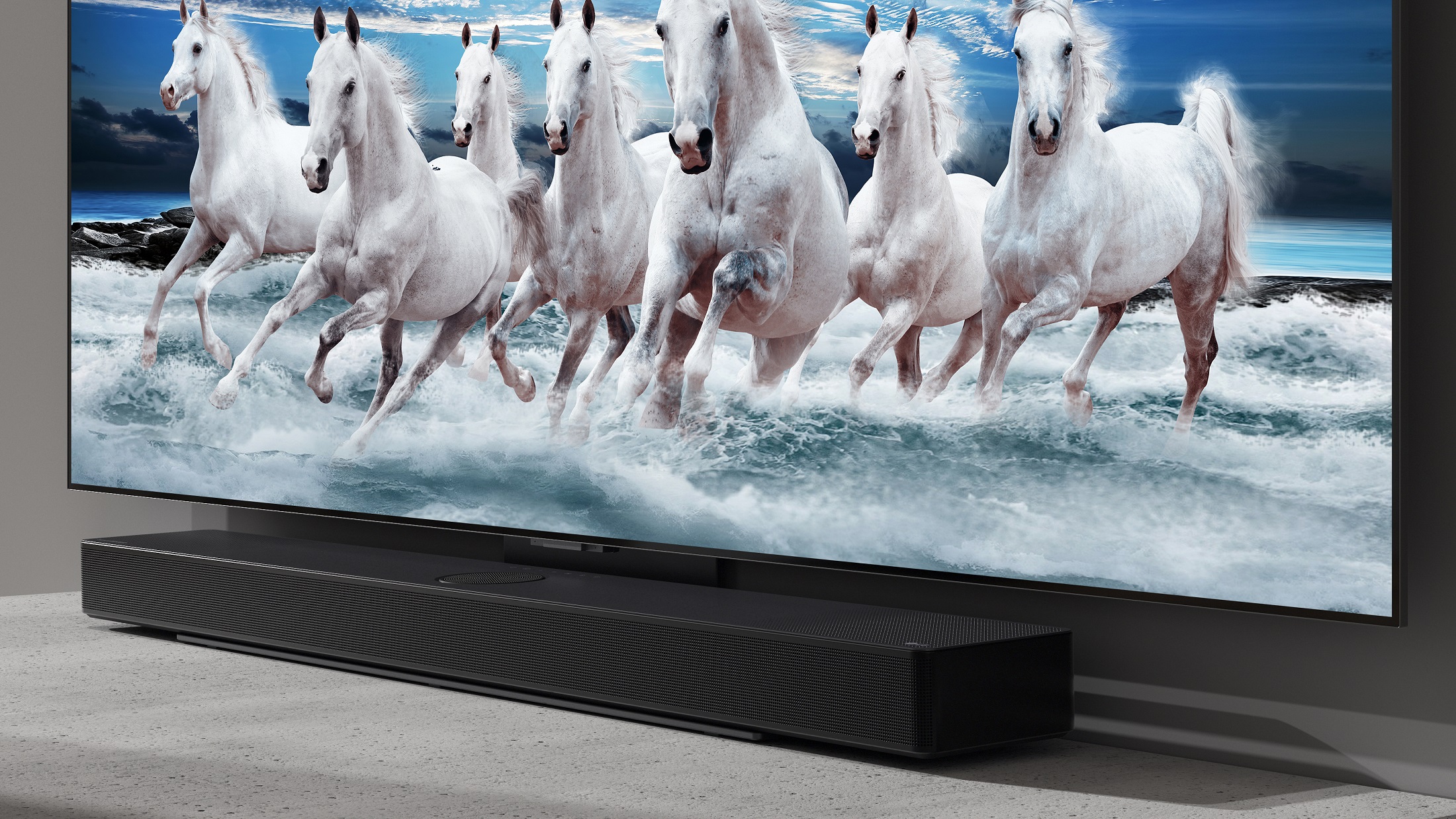- Article
- December 11, 2023
Expert advice: how to choose a TV that fits your needs and capabilities?

Over the last few years, we have seen the functionality of TVs increase as prices have fallen. Once exclusive and expensive features are now being added to mid-range and sometimes even entry-level models and less popular brands (Hisense, TCL, Sharp). Mid-range TVs now offer a wide range of extra features, colour spectrum and realistic picture quality. In the high-end TVs (from €750, €1000) we will find high 4K-8K resolution, advanced features, IoT smartness, better sound and picture quality reproduction and of course well-known brand names. Advanced TVs aim to create a cinema-like effect at home or in other rooms.
“According to the BRC Group, the TOP 5 most popular brands in Lithuania are currently Samsung, LG, Philips, Sony, MI (Xiaomi). In 2023, 55 diagonal TVs will account for more than a quarter of all diagonal TVs sold (~27%) in Lithuania. This means that Lithuanians tend to choose rather medium-sized TV sets.
The best sellers remain well-known manufacturers (Samsung, LG, Philips, Sony, MI (Xiaomi) mid-range TV sets. “According to the BRC Group, the most popular TV sets are those priced between €250-500, accounting for around 37% of all TV sets sold. The €500-750 TV segment is currently growing quite intensively, currently accounting for 20% of all TVs sold.”
Egidijus Sabaitis, Product development Manager at ACC Distribution
In 2023, LG’s Signature OLED M3 smart TV was launched, which connects with the Zero Connect Box advanced wireless technology. This technology uses 4K 120Hz wireless technology to quickly transmit video from other devices to the TV (from game consoles to other accessories).
In the latest generation of OLED TVs, the most popular models in Lithuania are LG’s OLED C3 series. In one of them, the 55-diagonal LG EVO C3 TV, priced at around €1,200, we can discover Brightness Booster technology, which will give a bright, rich picture. This TV has an ultra-slim design with a barely visible bezel and a 6th generation 4K processor α9 with artificial intelligence. Artificial Intelligence (AI) is extensively integrated into various functions of the TV. AI algorithms evaluate the TV’s display to enhance colour naturalness, facial recognition, colour intensity and brightness, and sound.
The X75WL series, launched earlier this year, is a popular model in Sony’s TV range. The price of the 55 diagonal TVs is below €700. This is a mid-range TV series, and this segment is valued for its picture quality and functionality. The X75WL series uses the 4K X-Reality™ PRO image processor adopted from previous generations, which is an innovation in the field as it uses a unique 4K database. This database compensates in real time for deficiencies in the video signal and detail. The advanced Acustic Surface Audio system will give the impression of sound coming from the screen. The Bravia Core system can also be found here – a movie database available exclusively to Sony users. Like all other 2023 models, this one features the Google TV operating system with unlimited possibilities. It is common for users to wonder whether Google TV and Android are compatible, but Google TV OS is actually a version of Android TV OS for TVs, with an improved and more user-friendly graphical user interface.
Entering the €1000 budget, we find Sony TV models (e.g. the 55 diagonal X90L priced at around €1000) with a cognitive intelligence processor – Bravia XR. Thanks to this processor, video content is analysed and redesigned according to how people see and hear in reality. In other words, the aim is to create the maximum image of reality. Thanks to the processor, the system tries to assess where on the screen a person’s attention is focused and highlights the relevant visual effects accordingly. For example, when watching a TV news programme, the processor estimates that the announcer’s voice, face and eyes need to be highlighted, as these are the natural focus of human attention. In the case of an action film, the sound and image are also adjusted to bring out the most spectacular parts of the film and further engage the viewer.
The Philips brand offers the opportunity to immerse yourself in the world of entertainment with the added lighting functionality of Ambilight. “Ambilight illumination expands the view of the screen. This technology sets Philips apart from other brands. TVs can be connected to Philips Hue smart bulbs to bring the colours of the TV picture to the whole room.
Philips Ambilight OLED818 Series TV features the three-sided Ambilight Next Generation system, which adapts to the colour of the room walls, providing customised pixel management, a more accurate match to the on-screen image and a wider colour palette. The new Ambilight system guarantees even better colour accuracy, detail and a brighter experience. The processor is also equipped with artificial intelligence algorithms and brings its full potential to 4K movies and TV series. This 55” TV series is available for less than €750.
Samsung announced the integration of Zigbee and Matter smart home technologies into SmartThings products in 2023. With this functionality, not only can the TV be controlled remotely, for example by changing the channel or adjusting the audio settings, but also the lighting in the home can be switched on the TV screen, the heating can be adjusted or security cameras can be monitored. The brand’s sleek and slim Q60C QLED TVs are popular in the country, featuring an advanced Quantum Processor Lite 4K processor, a subwoofer, Q-Symphony audio function, SolarCell solar panel and the SmartThings functionality mentioned above. The price of such a 55 diagonal TV is around €600.
The A2 series must be singled out in the Xiaomi family of TVs. Xiaomi has once again surprised with its pricing policy with this series. A TV with a 55 diagonal screen costs less than EUR 500. Despite the low price, Xiaomi’s A2 TVs leave an impression on many consumers – the narrow metal frame and Doby Vision technology ensure a higher level of brightness and colour contrast. The TVs are equipped with an Android smart system. The TVs can be controlled by voice, thanks to the Google Assistant system.
The next wave of new technologies is set to transform the viewing experience even further. In the coming years, we will see the growth of other technologies such as:
8K resolution. Over the years, the resolution of TV screens has increased rapidly from standard definition to 720p, 1080p and now 4K. But the next step in the evolution of TV screens is 8K resolution, which offers four times more pixels than 4K. With 8K resolution, viewers can expect sharper images and brighter colours, making the viewing experience more immersive than ever before.
5G technology. 5G technology offers faster video download and upload speeds. This technology is set to change the way we watch TV, enabling high-quality, low-latency streaming now not only on mobile but also on TV devices. This is particularly relevant for people who live in remote areas away from cities, where internet and TV transmission connections are poorer. With 5G, viewers will be able to watch their favourite shows and movies, games without having to worry about slow video loading.
Virtual reality. Virtual Reality (VR) technology will be used even more in the future in the context of television to create a more immersive viewing experience. For example, viewers will be able to use VR even more frequently to feel like they are in the action of a sports game or to view a TV show or film from a different perspective.
Artificial intelligence. Television has also been and will continue to be dramatically changed by artificial intelligence (AI). AI will be able to personalise the viewing experience by recommending shows and films based on the viewer’s interests and viewing history. AI can also be used to enhance the viewing experience by analysing viewer data to improve video and audio quality.
Immersive video games. With the growing popularity of video games, integrating gaming capabilities into TVs allows for a seamless transition from streaming shows to virtual games. In addition, modern gaming technology has advanced to the point where games can be displayed in stunning 4K resolution, giving gamers an immersive and visually impressive experience. The larger screen size of a TV also provides a more social gaming experience, as more than one person can come together to play and watch a game at the same time.
What to look for when choosing a TV?
Screen size. It is important to consider the distance at which the TV will be viewed and the size of the room. It is estimated that the optimum diagonal size of a TV screen should be 3 times smaller than the distance between the viewer and the TV set.
Smart operating system. Most of the content is only available to owners of smart TVs, with the possibility of remote connection between the TV and portable devices (computer, phone).
Screen resolution – higher resolution produces a more detailed picture, for TVs larger than 40 diagonals it is important to choose a TV with 4K resolution.
Screen refresh rate in Hz – the higher the refresh rate, the lower the picture lag and the smoother and clearer the content.
Colour and contrast reproduction formats and technologies – HDR10, DolbyVision technologies will give you a great viewing experience and a more realistic picture.
HDMI connections – to connect other video and audio devices to your TV, look for at least four connections on the TV unit, and if available, choose HDMI 2.1.

